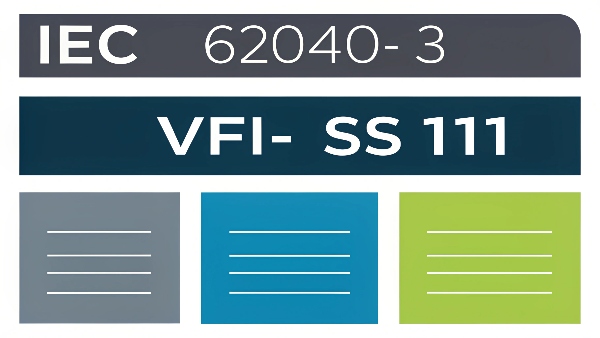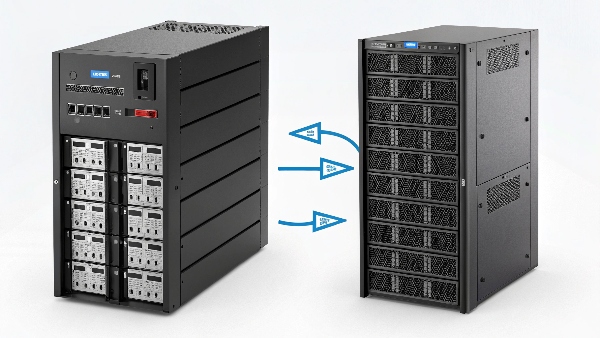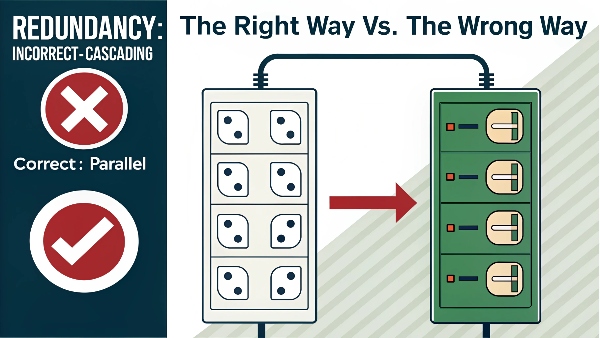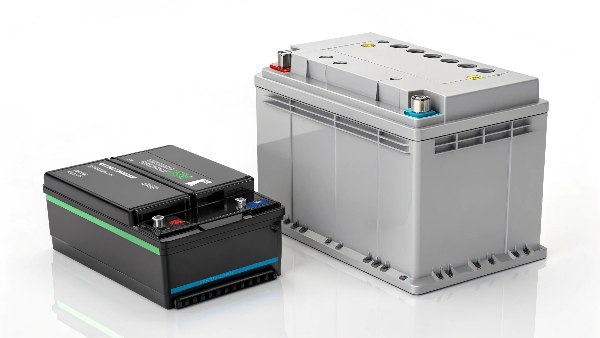You think you know UPS systems. But this basic knowledge can lead to costly mistakes in critical projects, causing the very downtime you aim to prevent.
Lesser-known facts include their detailed industrial classifications beyond just "Online," how their runtime can be extended for hours, the risks of connecting them in series, and the unique performance features of modern lithium-ion systems.

Transition Paragraph:
In my decade working at Daopulse, I've realized something important. A UPS is a stable industrial product, and many industrial fields need them in large numbers. But because they are so common, people often overlook the details. They see the tip of the iceberg but miss the critical mass below the surface. These overlooked details can make or break a major infrastructure project. Let's look at some of these deeper facts.
How would you classify an Uninterruptible Power Supply?
You know the basic three types of UPS. But this simple view is not enough for serious industrial projects. It can leave you specifying the wrong equipment for a critical job.
UPS systems are professionally classified using the IEC 62040-3 standard. It uses a three-part code, like VFI-SS-111, to precisely describe the UPS's performance, output waveform, and how it reacts to power changes.

Dive deeper Paragraph:
Most people stop at "Online" or "Line-interactive." But for the procurement managers and system integrators I work with, that's just the start. When we design and manufacture a UPS for a hospital in Germany or a data center in Singapore, we must meet precise specifications. The IEC 62040-3 standard is the language we use. It removes all ambiguity. For example, the highest classification is VFI-SS-111. "VFI" means Voltage and Frequency Independent, which is what you would call an Online UPS. This tells you the output is completely separate from the input. The other parts describe how the output waveform looks and how the UPS performs under different load changes. Knowing this allows a technical director to write a request for a proposal that is impossible to misunderstand. It ensures they are comparing apples to apples when evaluating suppliers.
Breaking Down the IEC Code
| Code Part | What It Describes | Example (VFI-SS-111) |
|---|---|---|
| Dependency | How the output relates to the input AC power. | VFI: Voltage & Frequency Independent (Online) |
| Waveform | The shape of the AC output voltage wave. | SS: Sinusoidal output on both mains and battery. |
| Performance | How the output voltage changes under different load steps. | 111: Highest performance class, very stable output. |
This level of detail is essential for any serious, large-scale project.
How long does a UPS work without a power supply?
You bought a UPS and expect it to last 15 minutes. But during a real outage, it only lasts five, causing a major system crash. This is a common and dangerous assumption.
The runtime of a UPS is not fixed. It depends on two factors: the size of its battery and the amount of power your equipment uses. Standard UPS units might last 5-15 minutes.

Dive deeper Paragraph:
The most common question I get is about runtime. The answer is always, "It depends on the load." A UPS rated for 1000VA might run a small server for 30 minutes. But if you connect two servers to it, the runtime will be much less than 15 minutes. The relationship is not linear. This is a critical detail for system integrators. A key part of our ODM service is helping clients correctly size their UPS and battery solution. We don't just sell a box; we design a system. For projects that need longer runtimes—like keeping a control room active until a generator is stable—we design systems with External Battery Modules (EBMs). These are essentially cabinets full of batteries that connect directly to the UPS. You can "stack" them to get the exact runtime you need. This modularity is a key feature for our clients. It allows them to scale their power protection as their needs grow, without replacing the core UPS unit.
Example: Runtime vs. Load
| Load on 3kVA UPS | Estimated Runtime | Notes |
|---|---|---|
| 25% (675W) | ~ 45 minutes | Light load, maximum runtime. |
| 50% (1350W) | ~ 20 minutes | Typical operating condition. |
| 100% (2700W) | ~ 7 minutes | Full load, minimum runtime. |
| 50% + 2 EBMs | ~ 2.5 hours | Adding batteries dramatically extends time. |
Would connecting a UPS to another UPS work?
You need more protection and think connecting two UPS units is a smart trick. This "cascading" is a bad idea. It can damage both units or cause an unexpected failure.
Connecting one UPS to another works but is not recommended. It is inefficient, can cause overloads, and creates complex power signals. The correct way to add redundancy is with a parallel UPS system.

Dive deeper Paragraph:
This idea of "cascading" or "daisy-chaining" UPS systems is something I strongly advise against. While it seems logical, it creates problems. The output waveform of the first UPS might not be clean enough for the input of the second UPS, especially with simpler models. This can cause the second unit to constantly switch to its battery, wearing it out. The proper engineering solution for higher reliability is parallel redundancy1. This is a core feature we design into our high-end modular UPS systems2. In an "N+1" configuration, for example, you have one more UPS module than you need to power the load. If one module fails, the others seamlessly take over its share. There is no single point of failure. For my clients managing data centers or financial transaction hubs, N+1 or even 2N (fully redundant) systems are the standard. We design these systems with dedicated parallel kits and control logic to ensure they work together perfectly. It's a planned, engineered system, not a risky shortcut.
What are the key features of lithium ion UPS systems?
Your lead-acid UPS batteries are heavy, bulky, and need replacing every few years. This costs you money in maintenance, labor, and valuable rack space. There is a much better way.
The key features of lithium-ion UPS systems are their long lifespan (8-10 years), smaller size, and lighter weight. They recharge much faster and tolerate higher temperatures, lowering total cost of ownership.

Dive deeper Paragraph:
At my company, developing advanced lithium-ion UPS solutions is a major focus. While the initial purchase price is higher, the long-term value is huge. This is especially true for large-scale deployments. For a procurement manager like Mr. Li at a hospital company, the Total Cost of Ownership (TCO) is a critical metric. A lead-acid battery might need to be replaced two or even three times during the lifespan of a single lithium-ion battery. You have to factor in the cost of the batteries, the labor to replace them, and the risk of downtime during replacement. Lithium-ion systems eliminate most of that. They also run more efficiently and can handle higher ambient temperatures, which can reduce the air conditioning load in a server room. This directly translates to lower electricity bills. When you look at the entire 10-year picture, lithium-ion is almost always the more cost-effective choice for a serious application.
Lithium-Ion vs. Lead-Acid
| Feature | Lithium-Ion (LiFePO4) | Sealed Lead-Acid (SLA) |
|---|---|---|
| Lifespan | 8-10+ years | 3-5 years |
| Weight & Size | Up to 60% lighter and smaller | Heavy and bulky |
| Recharge Time | 2-4 hours | 8-12 hours |
| TCO | Lower over the system's life | Higher due to replacements |
Conclusion
A UPS is a complex product. Understanding its classification, runtime, redundancy, and battery technology is key to choosing the right solution and avoiding costly project errors.

